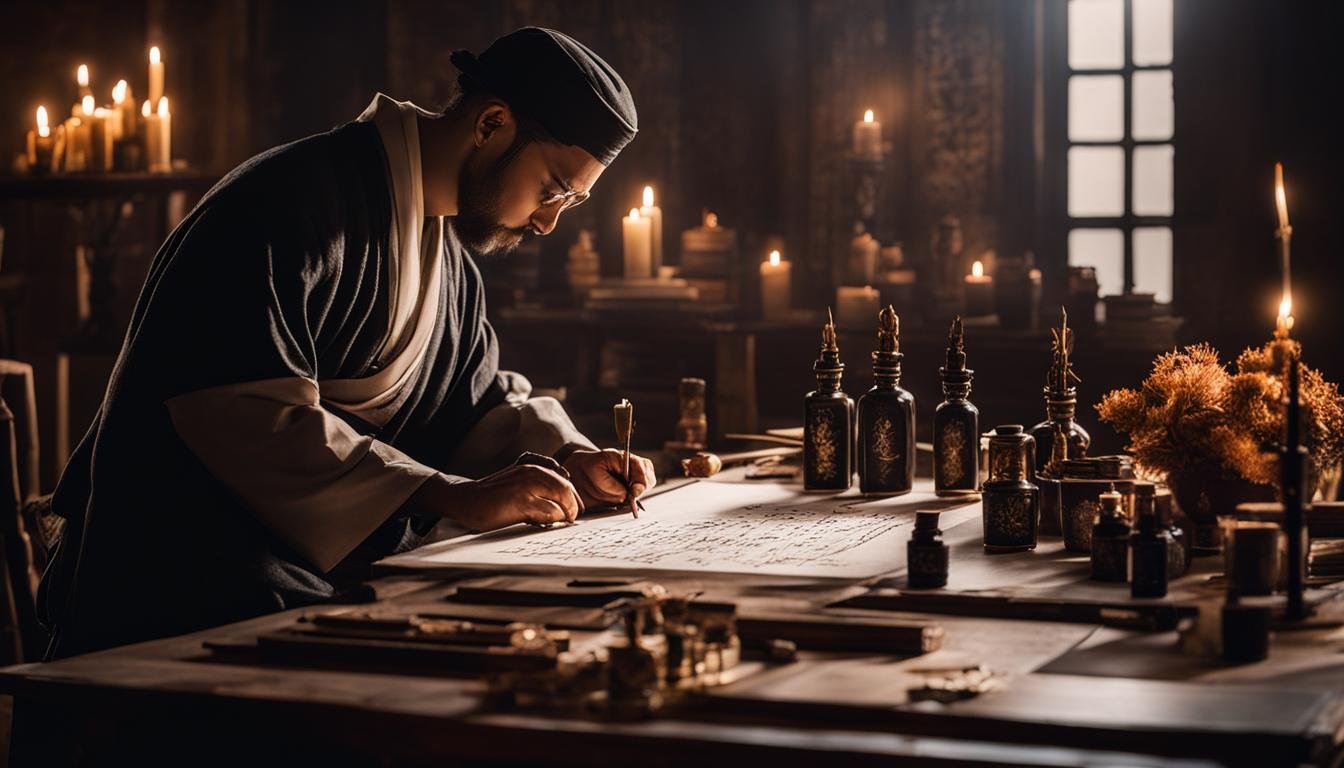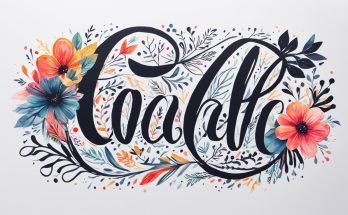Calligraphy Practice with Quotes: Transform Your Handwriting with These Inspirational Artworks
Welcome to the world of calligraphy practice with quotes! Whether you are a beginner or a seasoned hand lettering enthusiast, creating beautiful and inspirational artwork with calligraphy quotes is a rewarding experience.
Calligraphy quote art allows you to transform words into visually captivating pieces that reflect your personal style and creativity. With the right techniques and tools, you can create stunning DIY gifts or decorate your own space with meaningful quotes brought to life through the art of calligraphy.
In this article, we will guide you through the process of calligraphy practice with quotes, from choosing the right paper to framing your artwork. So grab your favorite calligraphy pen and let’s get started!
Key Takeaways:
- Calligraphy quote art is a personal and thoughtful DIY gift.
- Choose a premium acid-free paper for best results.
- Select short quotes that flow well and inspire you.
- Create a draft using calligraphy guidelines and pencil calligraphy.
- Trace over the draft with a calligraphy pen for a finished piece.
Choose a Premium Paper
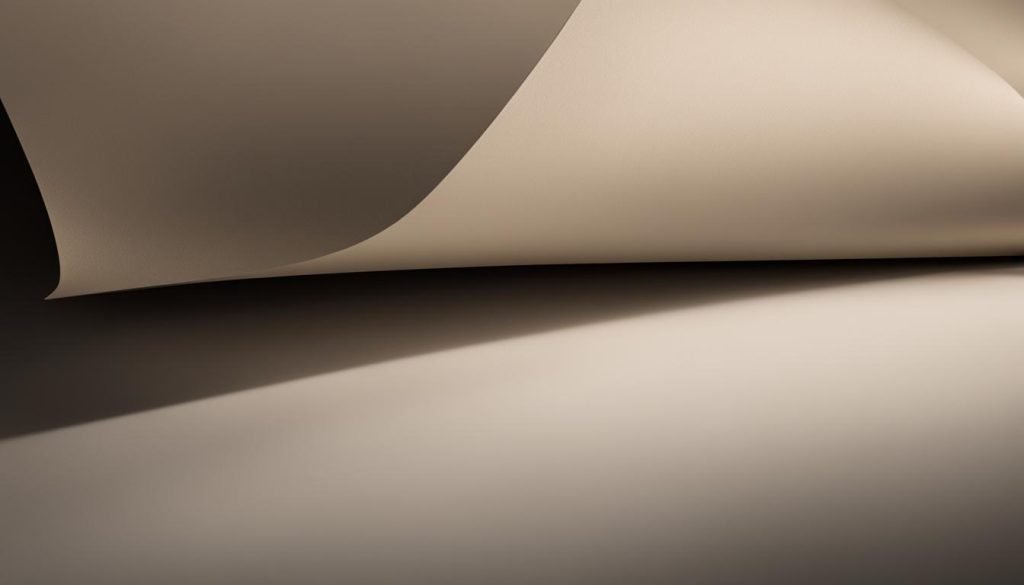
When creating calligraphy quote art, it is crucial to select a high-quality paper that enhances the final result. Opting for a premium paper not only adds a touch of elegance but also ensures that your artwork will withstand the test of time. One key factor to consider is choosing an acid-free paper. Acid-free paper prevents the paper from deteriorating and reacting with the ink over time, preserving the integrity of your calligraphy.
Two recommended options for premium paper are 140 lb. watercolor paper and 80 lb. drawing paper. These papers are known for their durability and ability to hold ink well. Watercolor paper, with its thick and textured surface, provides a beautiful backdrop for calligraphy quotes, while drawing paper offers a smooth finish that is suitable for precise lettering.
Keep in mind that cutting the paper to the desired size is also important, especially if you plan to frame your artwork. For example, cutting the paper to standard sizes like 8″ x 10″ ensures that it fits seamlessly into ready-made frames. By choosing a premium paper, you can elevate the overall quality of your calligraphy quote art and enhance its visual impact.
Table: Comparison of Premium Papers
| Quality | 140 lb. Watercolor Paper | 80 lb. Drawing Paper |
|---|---|---|
| Thickness | Thick and textured | Smooth |
| Suitability | Ideal for watercolor techniques | Perfect for precise lettering |
| Ink Absorption | Excellent | Good |
| Size Options | Various, including standard sizes | Various, including standard sizes |
Choose the Quote and Format
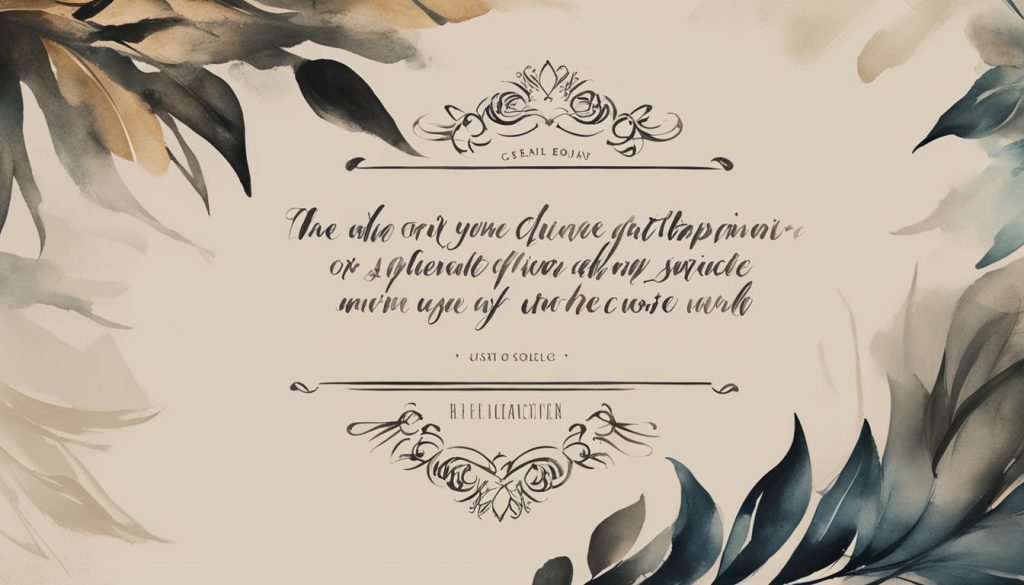
Before creating your calligraphy quote art, it’s important to choose the right quote and determine the format that best suits it. When selecting a quote, consider its length and message. It’s recommended to choose short and impactful quotes that can be easily written and understood. A quote with a welcoming and inspiring tone often works well for calligraphy projects.
Once you have your quote, experiment with different ways to break it up and format it on the page. Write out the quote in regular handwriting to get a sense of how it flows. Play with different arrangements, such as centering the text or aligning it to one side. You can also experiment with adding embellishments or flourishes to enhance the overall design.
Remember, the goal is to create a visually appealing piece of art that captures the essence of the quote. Take your time to find the right quote and format that resonate with you and evoke the desired emotions and meaning.
Table: Tips for Choosing the Quote and Format
| Tip | Description |
|---|---|
| Keep it short | Choose a quote that is concise and can be easily written. |
| Consider the tone | Select a quote that has a welcoming and inspiring tone that resonates with you. |
| Experiment with formatting | Try different arrangements and embellishments to create a visually appealing design. |
| Reflect the meaning | Ensure that the chosen quote and format capture the essence and message you want to convey. |
By carefully choosing the quote and format for your calligraphy art, you can create a visually captivating piece that embodies the message and emotions you want to share.
Make a Draft
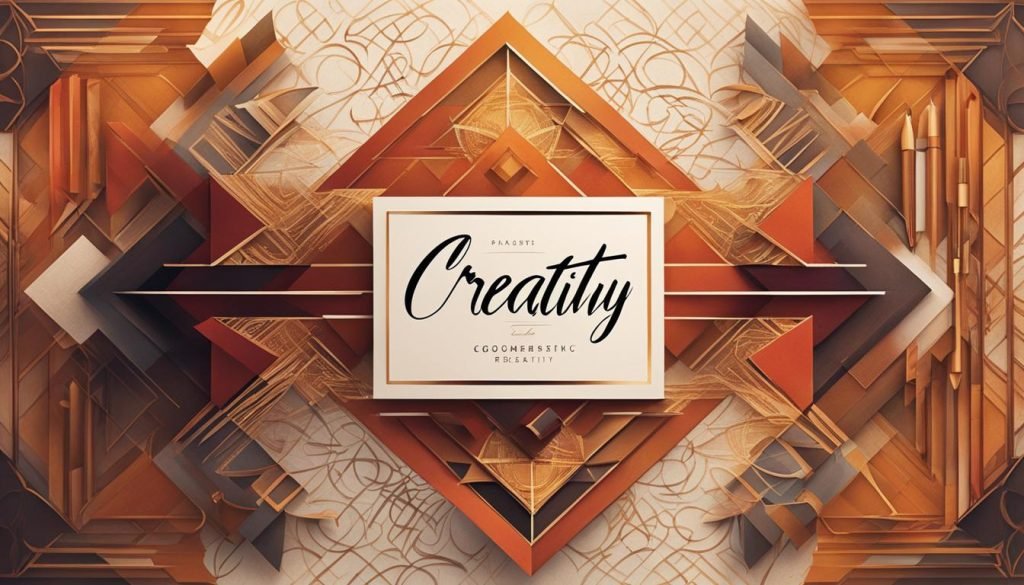
Creating a draft is an essential step in calligraphy practice. It allows you to plan and perfect your artwork before committing to the final copy. To make a draft, cut a piece of white scrap paper to the desired size of your artwork. Use a ruler to draw calligraphy guidelines on the paper. These guidelines will help you maintain consistent letter height and spacing.
Next, use pencil calligraphy to write out the quote on the draft paper. Pay attention to centering the words and adjusting any off-centered ones using vertical guidelines. This step allows you to experiment with different flourishes and customize your design according to your artistic preferences. Don’t worry about perfection at this stage; the draft is meant to serve as a guide for your final piece.
Remember, calligraphy is as much about artistic expression as it is about precision. Feel free to add your personal touch and create unique variations that reflect your style. Once you are satisfied with your draft, you can move on to tracing over it with ink to create the finished calligraphy quote artwork.
Table: Materials for Draft Creation
| Materials | Description |
|---|---|
| Scrap paper | White paper for creating the draft |
| Ruler | To draw calligraphy guidelines |
| Pencil | For writing calligraphy and making adjustments |
| Eraser | To remove any mistakes or unwanted lines |
Creating a draft is an important part of the calligraphy process as it allows you to plan and experiment with different elements of your artwork. By following the guidelines and using pencil calligraphy, you can create a draft that serves as a roadmap for your final calligraphy quote masterpiece. So, take your time, let your creativity flow, and enjoy the process of bringing your quotes to life through calligraphy!
Trace Over the Draft
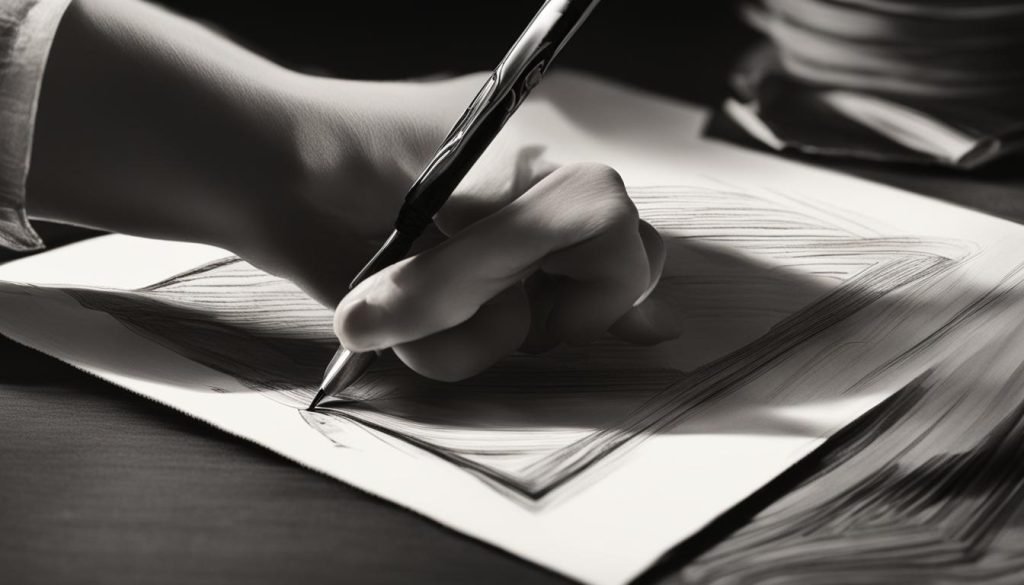
Once you have created a draft of your calligraphy quote, the next step is to trace over it using a light box and a calligraphy pen. The light box is a useful tool that allows you to see the draft underneath your final paper, making it easier to replicate the letterforms accurately.
To trace over the draft, place the “nice paper” over the draft and adjust the alignment until the calligraphy is centered vertically. The light box should be positioned underneath the paper, providing a clear view of the draft. As you trace over the draft with your calligraphy pen, be mindful of maintaining consistent pressure and ink flow.
The light box technique ensures that your spacing, letter formations, and overall composition are on point, resulting in a clean and professional-looking piece of calligraphy quote art. However, it’s important to note that this tracing method is best suited for use with light-colored papers and may not be effective with dark or heavily textured papers.
“Tracing over the draft using a light box is a game-changer for calligraphy artists. It allows for precise and clean lettering, ensuring that your finished piece looks polished and professional.”
So, if you want your calligraphy quote art to have that flawless appearance, investing in a light box and utilizing this technique will definitely take your work to the next level.
Frame (Optional)
When it comes to showcasing your calligraphy quote art, framing is an optional but recommended step. Not only does it elevate the presentation of your artwork, but it also adds a touch of sophistication and protection.
Framing calligraphy quote art doesn’t have to break the bank. Thrift stores often offer affordable frames that can be repurposed for your artwork. You can also consider DIY framing options, which allow you to customize the frame to your liking while saving costs.
When selecting a frame, make sure it complements the style and size of your artwork. Consider the overall aesthetic you want to achieve and choose a frame that enhances your calligraphy. Adding a mat around your artwork can further enhance its appearance and create a polished look.
Remember, framing your calligraphy quote art is not only about enhancing its visual appeal but also about preserving and protecting it. A well-framed artwork can make for a thoughtful and personalized gift or a stunning addition to your home decor.
| Benefits of Framing Calligraphy Quote Art: | Tips for DIY Framing: |
|---|---|
| 1. Elevates the presentation of your artwork | 1. Look for affordable frames at thrift stores |
| 2. Adds a touch of sophistication | 2. Customize the frame to your liking |
| 3. Protects the artwork from damage | 3. Consider adding a mat for a polished look |
| 4. Makes for a thoughtful and personalized gift | 4. Ensure the frame complements your artwork |
| 5. Enhances the overall aesthetic of your space | 5. Preserve and protect your artwork |
Online Course – Intro to Hand-Lettering for Inspirational Quotes
Are you looking to enhance your calligraphy skills and create beautiful hand-lettered artwork with inspirational quotes? Enroll in our online course, “Intro to Hand-Lettering for Inspirational Quotes,” and unlock your creative potential.
Our comprehensive course covers all aspects of hand-lettering, from choosing the right tools and materials to mastering various lettering styles. You’ll learn composition concepts to create visually appealing quotes and discover the planning and execution techniques that bring your ideas to life.
What you’ll learn:
- The essential tools and materials for hand-lettering
- Different styles of lettering and their applications
- Composition concepts to create visually appealing quotes
- Planning techniques to execute your ideas effectively
- Tips for photographing and sharing your hand-lettering pieces
- Access to a supportive community of students for knowledge sharing and inspiration
Join our online course today and embark on a creative journey to master the art of hand-lettering. Express your ideas, inspire others, and create stunning artwork that showcases your unique style. Enroll now and unlock your creative potential!
Table: Course Overview
| Lesson | Topic |
|---|---|
| 1 | Introduction to hand-lettering and tools |
| 2 | Exploring different lettering styles |
| 3 | Composition and layout concepts |
| 4 | Planning and executing your hand-lettering ideas |
| 5 | Photographing and sharing your hand-lettered quotes |
What is calligraphy?
Calligraphy is a visual art form that involves stylized and elegant handwriting. It is the design and execution of lettering using various writing instruments. Calligraphy is often considered a form of artistic expression and can be compared to listening to music with one’s eyes. It requires skill and practice to create beautiful and harmonious symbols.
“Calligraphy is a skill that combines the precision of a surgeon with the creativity of an artist.”
In calligraphy, each stroke is carefully crafted to create a visually appealing composition. The flow, spacing, and rhythm of the letters are meticulously considered to achieve a harmonious and balanced piece of art. Calligraphy can be done using different styles such as Copperplate, Gothic, or Italic, each with its unique characteristics.
Visual Art and Elegant Handwriting
Calligraphy goes beyond mere handwriting, transforming words into visual art. It adds a touch of elegance and sophistication to any piece of writing. Calligraphy is commonly used for invitations, certificates, and other special occasions where the presentation is as important as the message itself. With its rich history and cultural significance, calligraphy continues to be appreciated and practiced by artists and enthusiasts around the world.
| Key Points | Details |
|---|---|
| Artistic Expression | Calligraphy is a form of artistic expression that combines skill and creativity. |
| Precision and Beauty | Each stroke in calligraphy is carefully crafted to achieve a visually appealing composition. |
| Styles and Techniques | There are different calligraphy styles, such as Copperplate, Gothic, and Italic, each with its unique characteristics. |
| Elegance and Sophistication | Calligraphy adds a touch of elegance and sophistication to any piece of writing. |
| Cultural Significance | Calligraphy has a rich history and is still appreciated and practiced today. |
So, if you have a love for beautiful letters and a desire to create art through elegant handwriting, calligraphy may be the perfect art form for you to explore.
With practice and dedication, you can develop your calligraphic skills and create stunning pieces that will be admired by others. So why wait? Grab a pen, choose your favorite quote, and let the beauty of calligraphy unfold on the page.
Understanding the Basics of Writing Calligraphy Quotes
Writing calligraphy quotes is an art that goes beyond just putting pen to paper. It involves transforming words into visually captivating pieces, adding beauty and elegance to the writing. To master the basics of calligraphy quotes, you need to understand how to use the pen’s nib correctly, have the right tools at your disposal, and learn proper pen holding techniques.
Impactful words are at the heart of calligraphy quotes. Choosing a quote that resonates with you and has a profound meaning is essential. The words you select should inspire and evoke emotion, creating a lasting impact on those who read them.
Transforming quotes into art requires practice and patience. Take the time to experiment with different lettering styles, stroke thicknesses, and flourishes. Allow your creativity to flow as you create each stroke and curve. Every piece you create is unique and represents your individual artistic expression.
“The art of calligraphy quotes lies in the harmony between the words and the strokes. It’s like a dance on paper, where every movement matters.”
Embrace the learning process and don’t be afraid to make mistakes. Calligraphy is a skill that develops over time with consistent practice. With dedication and a love for the art, you can create impactful and inspiring calligraphy quote pieces that will leave a lasting impression.
Mastering Calligraphy: Tips for Beginners
If you’re new to calligraphy, here are a few tips to help you on your journey:
- Start with simple lettering styles and gradually progress to more complex ones.
- Practice your strokes and spacing regularly to improve consistency and perfection.
- Invest in high-quality calligraphy tools such as pens, nibs, and ink to enhance your writing experience.
- Join online communities or local calligraphy groups to connect with fellow enthusiasts and gain inspiration.
Remember, calligraphy is a continuous learning process. Enjoy the journey, embrace your unique style, and let your passion for the art guide you as you create stunning calligraphy quote pieces.
A little more about calligraphy quotes!
Practicing calligraphy quotes is not just about mastering the art of calligraphy itself; it involves several key steps that contribute to the creation of beautiful and meaningful artwork. One important aspect is the selection of premium paper, which ensures a high-quality finish and durability. Choosing the right paper is crucial in showcasing the artistic details of your calligraphy quotes. Acid-free papers, such as 140 lb. watercolor paper or 80 lb. drawing paper, are recommended for their longevity and resistance to ink reactions over time. By investing in premium paper, you can enhance the overall aesthetic appeal of your calligraphy artwork.
“The paper you choose can greatly impact the final result of your calligraphy quotes. Premium acid-free papers provide a smooth and durable surface, allowing your calligraphy to shine and last for years.”
Another essential step in creating calligraphy quotes is the creation of a draft. Making a draft helps you plan the layout, spacing, and overall design of your artwork. Start by cutting a piece of white scrap paper to the desired size and draw calligraphy guidelines using a ruler. These guidelines will serve as a reference for maintaining consistent letter heights and spacing. Using pencil calligraphy, write out the quote, paying attention to centering, word size, and any embellishments or flourishes you wish to include. The draft allows you to experiment and make adjustments before transferring your final piece.
“Creating a draft gives you the freedom to play around with different layouts and styles, ensuring that your calligraphy quote art turns out exactly as you envisioned.”
Practicing calligraphy quotes is an art form that combines skill, creativity, and personal expression. By carefully selecting premium paper and creating a draft, you lay the groundwork for creating stunning calligraphy quote artwork that reflects your unique style and message. Take the time to practice and experiment with different techniques, and soon you’ll be creating beautiful calligraphy quotes that inspire and captivate.
| Premium Paper Selection | Draft Creation |
|---|---|
|
|
Quotes for Beginners that Would Look Good in Calligraphy
If you’re a beginner looking to practice calligraphy, choosing the right quotes can make a big difference in honing your skills and creating beautiful lettering artwork. Here are some easy and meaningful quotes that would look great in calligraphy:
1. “Believe in yourself.”
This simple yet powerful quote serves as a reminder to have confidence in your abilities and believe in your dreams. It’s a great quote for beginners to practice different lettering styles while conveying an empowering message.
2. “Be kind to yourself and others.”
This quote emphasizes the importance of kindness and compassion, both towards yourself and those around you. It’s a wonderful choice for calligraphy practice as it allows you to experiment with different flourishes and decorative elements to convey a sense of warmth and positivity.
3. “Every journey begins with a single step.”
This quote inspires perseverance and reminds us that every great accomplishment starts with a small action. Calligraphically rendering this quote allows beginners to practice creating visually appealing compositions and explore different lettering techniques.
4. “Creativity takes courage.”
As a beginner in calligraphy, exploring your creativity and taking risks can be intimidating. This quote encourages you to embrace your artistic side and pushes you to step outside your comfort zone. Calligraphically writing this quote can help you develop confidence and experiment with unique lettering styles.
Remember, the key to improving your calligraphy skills is practice, so don’t be afraid to try different quotes and styles as you continue your journey in the art of beautiful lettering.
Conclusion
Calligraphy practice with quotes is a creative and inspiring art form that allows you to transform words into visually captivating pieces. By following the steps outlined in this guide, you can improve your calligraphy skills and create frame-worthy artwork. Whether you choose to use calligraphy quote art as personal decorations or thoughtful gifts, it adds a special touch to any space.
Remember to select a premium paper that is acid-free, such as 140 lb. watercolor paper or 80 lb. drawing paper, for the best results. Choose a quote and format that flows well and inspires you. Make a draft using calligraphy guidelines and pencil calligraphy, and don’t be afraid to experiment with flourishes. Then, trace over your draft using a calligraphy pen, ensuring proper spacing and letter formations.
If you want to take your calligraphy skills to the next level, consider enrolling in an online course to learn hand-lettering for inspirational quotes. These courses offer valuable lessons on tools, lettering styles, composition concepts, planning, execution, and more. Practice and patience are key to mastering the art of calligraphy and creating impactful and inspiring pieces. So start practicing today and let your creativity flow through the art of calligraphy!
FAQ
What is the best paper to use for calligraphy quote art?
It is recommended to choose a premium acid-free paper, such as 140 lb. watercolor paper or 80 lb. drawing paper.
How do I choose the quote and format for my calligraphy quote art?
Writing out the quote in regular handwriting and experimenting with different ways to break it up can help find a format that flows well. Keep the quotes short to avoid lengthy and challenging writing. Choose a quote that has a welcoming tone and inspires you.
What is the process for making a draft of my calligraphy quote art?
Cut a piece of white scrap paper to the desired size and draw calligraphy guidelines with a ruler. Use pencil calligraphy to write out the quote and pay attention to centering and word size. Experiment with flourishes and customize the pencil draft with an eraser.
How can I trace over my draft for a finished piece of calligraphy quote art?
Use a light box to place the “nice paper” over the draft and carefully trace over it with a calligraphy pen. This method ensures proper spacing and letter formations, resulting in a clean and professional look.
Is framing the calligraphy quote art necessary?
Framing the artwork is optional but can elevate its presentation. Thrift stores often have affordable frames, and mats can be DIY’ed to save costs. Framing provides a finished look and protects the artwork.
Are there any online courses available to improve my calligraphy skills?
Yes, there are online courses available for hand-lettering and calligraphy. These courses cover tools and materials, lettering styles, composition concepts, planning and execution, and photographing and sharing the lettering pieces. They are suitable for beginners and offer unlimited access to course materials and a community of students to share knowledge and ideas.
What is calligraphy?
Calligraphy is a visual art form that involves stylized and elegant handwriting. It is the design and execution of lettering using various writing instruments.
How can I improve my calligraphy skills and create impactful calligraphy quote art?
Practice and patience are essential to master the art of calligraphy. Understanding the basics of writing calligraphy quotes involves knowing how to use the pen’s nib, having the right tools, and learning proper pen holding techniques. By following the steps outlined in this guide, beginners can improve their calligraphy skills and create frame-worthy artwork.
Are there any quotes that are suitable for beginners to practice calligraphy?
Yes, there are quotes from famous individuals such as Isaac Newton, Buddha, and Albert Einstein that are perfect for honing calligraphy skills. These quotes are meaningful and can be transformed into beautiful works of art through calligraphy.

